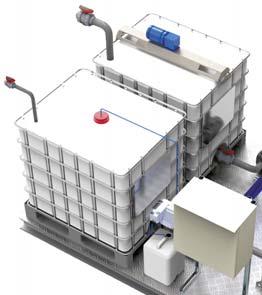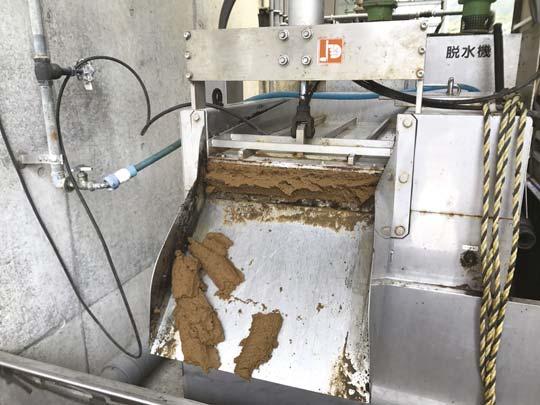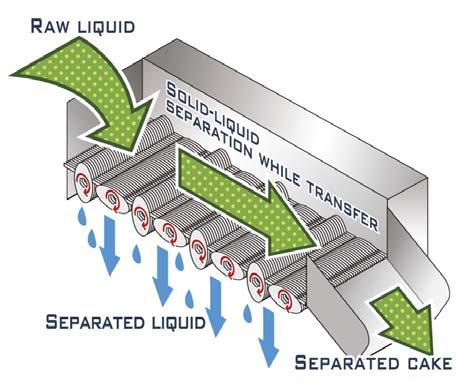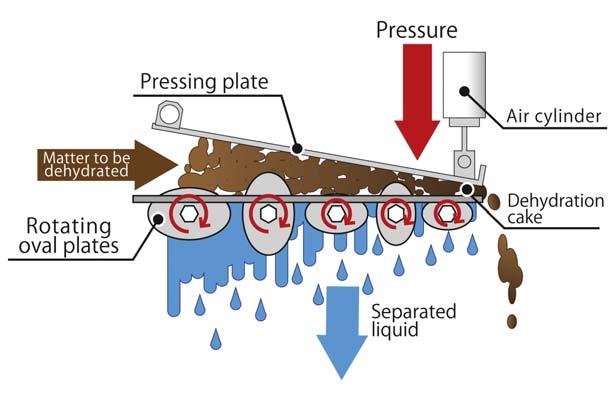
3 minute read
KDS sludge dewatering solves both environmental and disposal issues
Disposing of sludge from livestock processes can be a hazardous job, but KDS off ers an alternative that is not just safer, but more cost-eff ective as well.
Acompact and cost-efficient alternative to conventional dewatering technologies, the KDS Multidisc Separator system from CST Wastewater Solutions, is being introduced to Australia and New Zealand.
Advertisement
Able to eliminate costs and occupational health and safety hazards associated with damper and heavier output from pork processing and major food preparation operations, the system, which requires no washwater while capturing 90 to 99 per cent of solids, is engineered to overcome the limitations of technologies such as screw presses, belt presses and centrifuges currently used.

APPLICATION
Applications include small-to-medium pork, meat and livestock, poultry, fi sh, and dairy plants as well as large-scale food and beverage kitchens and catering facilities which face the challenge not only of handling heavy, sticky wet waste, but also the volume and cost and occupational health and safety hazards of transporting such unhygienic material to disposal facilities.
According to CST Wastewater Solutions managing director, Michael Bambridge, other benefi ts include the removal of solids from waste streams, dewatering of sludge and solids, and dewatering of chemical sludge from dissolved air fl otation fl oats, among others.
Moreover, the largest energy-saving KDS unit can handle about a hundred kilograms of dry solids an hour at 98 per cent solids capture, to produce this more hygienic and more compact output that is easier and cheaper to handle and transport, he says.



CST Wastewater Solutions’ KDS separator


The high effi ciency roller action of the KDS unit is now being incorporated by CST Wastewater Solutions into a wide range of applicaitons
ADVANTAGES
Used for dewatering of dissolved air fl otation sludge, a very common application throughout waste water operations, The KDS achieves solids capture of 97 per cent thickened sludge at a dryness of 17 per cent. Waste activated sludge dryness levels are typically 15 to 18 per cent dryness.
Among other benefits, this high quality, Japanese-manufactured technology uses minimal energy, consuming as little as 0.06kW hr of electricity, operates at a low non-intrusive noise and vibration levels at 63dBa and requires minimal daily maintenance while occupying half the space or less of conventional dewatering plants.
The lighter, drier waste it produces reduces the need for manual labour in cleaning and transport operations and curtails the need for staff to handle sloppy heavy waste potentially hazardous to health.
“The KDS’ minimal water, power and space demands means that it is ideally suited to both smaller-to-medium business and also to those operating in remote or environmentally sensitive situations,” said Bambridge.
THE PROCESS
Versatile, the separator has been designed for many applications, including barrel polishing water, water-based paint wastewater, grease trap waste, dyeing wastewater, waste oil, and plastic recycling as well as sewage treatment, including raw wastewater and sludge to landfi ll, among many others.
The clog-free automatic liquid-to-solid waste separator dewaters solids and conditioned sludge on a self-cleaning wedgewire belt. The static belt is then cleaned by a unique set of rotating oval shape plates.
After the drainage and thickening zone, the thickened sludge passes a dewatering zone which consists of an adjustable plate, actuated manually or by pneumatic cylinder to further squeeze the solids.
The KDS’ unique self-cleaning dewatering and conveying system also features an oval plate separation and transfer structure that prevents clogging and permits automatic continuous operation that handles oily and fi brous material with ease. “This simple-to-maintain separator offers a high throughput within a small body, with the smallest model being just under 350mm wide and weighing 50 kilograms. The compact rotational oval plate structure achieves high transportation and separation efficiencies, while the simplicity of the machine’s overall structure off ers low maintenance, achieving cost and OH&S benefi ts through less handling being required to clear hazardous materials,” Bambrige added.
“The KDS separator uses a fraction of the power of a centrifuge and requires no water usage during operation, unlike a belt press or a screw press. For a relatively low investment cost, it also off ers a high performance alternative to sludge drying beds and geobags, for example.” WWA
All images are credited to CST Wastewater Solutions










